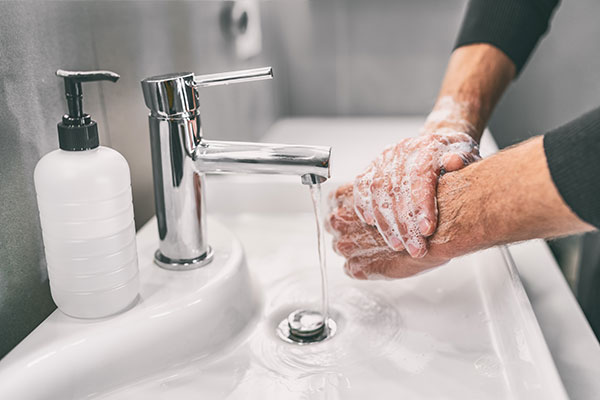What Does PPE per CDC Guidance Mean for Emergency Dentistry and Metro Smiles Dental?

In order to practice the safest dental care possible during emergency dentistry, dental workers typically use a variety of personal protection equipment. These items can protect them from blood-borne illnesses, viruses that spread via coughing and sneezing and illnesses that may spread from touching an infected area of the mouth. Knowing what to expect with PPE equipment, how it is used and how the Centers for Disease Control and Prevention guides dentists in safe care practices may help patients feel more at ease when a dental crisis arises.
Types of PPE and use
Personal protective equipment is used by dentists, dental hygienists and lab assistants who come in contact with the patient’s teeth, tongue and gums. There is a variety of PPE used during a dental emergency, including:
- Surgical and heavy-duty gloves
- Face masks
- Disposable gowns
- Face shields
These items are designed to protect the skin and mucous membranes from harm or from coming into contact with a patient’s blood or tissue. This can be especially important during an emergency, when the risk of blood or saliva spatters may be high.
What can patients expect?
Patients who arrive at a clinic for emergency dentistry may be advised of the type of PPE the dentist and technicians may wear for protection. If the patient is a child, dental assistants may advise parents about what type of gear might be used so the dentist’s appearance is less frightening, especially in the case of small children. Individuals experiencing heavy bleeding in the mouth from a broken tooth or visible pus from an infection can expect dental workers to wear heavier gloves and face shields.
Does PPE change for emergency situations?
Most dental clinics follow basic hygiene and protection guidelines for routine procedures; however, the equipment used during an emergency may be different depending on the circumstances. For example, if a patient comes to the clinic with a tooth abscess, the dentist and dental technicians may take additional PPE precautions because of the presence of infection. If the patient has symptoms like bleeding and severe pain, additional equipment may be used to protect dental workers against unknown pathogens.
What are some CDC guidelines?
The Centers for Disease Control and Prevention offer guidelines for emergency dental care so that dentists and technicians can maintain good health and prevent the spread of infection. While gloves and gowns are typically used during most dental checkups and elective procedures, the CDC recommends a few extra steps to ensure the safety of all involved. The patient may be assessed at the time of arrival to ensure they are not suffering from any infectious ailments, such as respiratory issues., and any blood or other mouth fluids will likely be considered biohazardous and cleaned with disinfectant products. The CDC also recommends eyewear with protective side shielding, to change gloves and gowns if they become spattered or soiled and to use surgeon’s gloves that are approved by the Food and Drug Administration.
Conclusion
Emergency dentistry can pose significant health risks for dental workers, especially where oral infection is present. Wearing CDC-approved personal protection equipment can reduce the spread of infection and illness for everyone involved.
Request an appointment here: https://metrosmiles.com or call Metro Smiles Dental at (718) 841-9591 for an appointment in our Forest Hills office.
Check out what others are saying about our services on Yelp: Read our Yelp reviews.
Related Posts
Whether you are missing a tooth or have a cracked tooth that needs repair, restorative dentistry can help. This article will discuss some of the most common dental restoration services available today.A tooth-colored filling, also known as composite resin, is made of plastic and can be used to replace decayed areas of teeth. The material…
Clear braces and other orthodontic advances make teeth straightening treatment more attractive to many patients. From clear aligners to ceramic braces, these innovative treatments allow patients to align their smiles without noticeable metal brackets and wires. Thanks to these alternatives, teeth straightening has become more accessible to those who want to avoid traditional metal braces.Traditional…
Cracked and chipped teeth can be unsightly and painful, but dental restoration can help. Even a painless chip or crack may become a bigger problem if left untreated. Severe pain, swollen and tender gums, and infection may result. In the worst cases, it will be necessary to extract the broken tooth. There are many ways…
You may need a type of dental restoration at some point in your life. There are many types of treatments available. Knowing how to select each one can give you the results that you need. Here are some tips on how to choose the right type of dental restoration procedure that will fit your dental…
